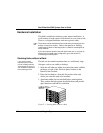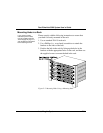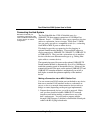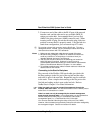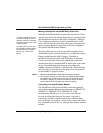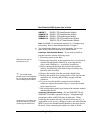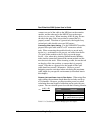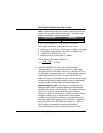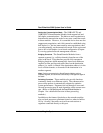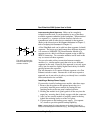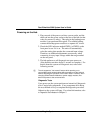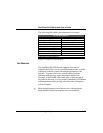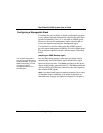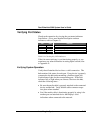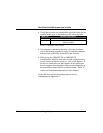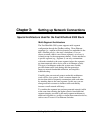
Fast EtherHub 3500 System User’s Guide
2-10 Installing the System
Setting the Communication Mode - The 100BASE-TX and
100BASE-FX SmartExtender Modules both support half and
full-duplex communications. The hub uses auto-negotiation to
determine the transmission mode for any new connection made
to these modules. However, if a connected device does not also
support auto-negotiation, and a link cannot be established using
half duplex (i.e., the last state tested by auto-negotiation), then
you must manually set the transmission mode for the concerned
port to full or half duplex via on-board configuration (Chapter
4) or using optional network management software.
Bridging Functions - The SmartExtender Modules form a
separate segment (i.e., collision domain) from the rest of the
ports in the stack. They therefore provide fully transparent
bridging functions which automatically learns node addresses
required to filter and forward traffic based on the destination
address (i.e., traffic is filtered if the destination address is in the
local collision domain, or forwarded if the destination is in
another segment).
Note: Devices connected to the SmartExtender Module exist in a
separate segment, and cannot be controlled by a management agent in
the stack.
Switching Functions -
These modules also provide functions
commonly found on an Ethernet switch. The scheme used to
process data packets is automatically adjusted to optimize
system performance. Fragment-free cut-through or store-and-
forward processing may be used depending on the current error
rate. (Refer to
Data Switching with the SmartExtender Modules in
Chapter 1 for a detailed discussion of these processing
methods.)
In addition to the features listed above, the extender modules
also use back pressure to eliminate frame loss when its buffers
fill, by “slowing” the traffic received from end stations or
segments connected directly to this port.



